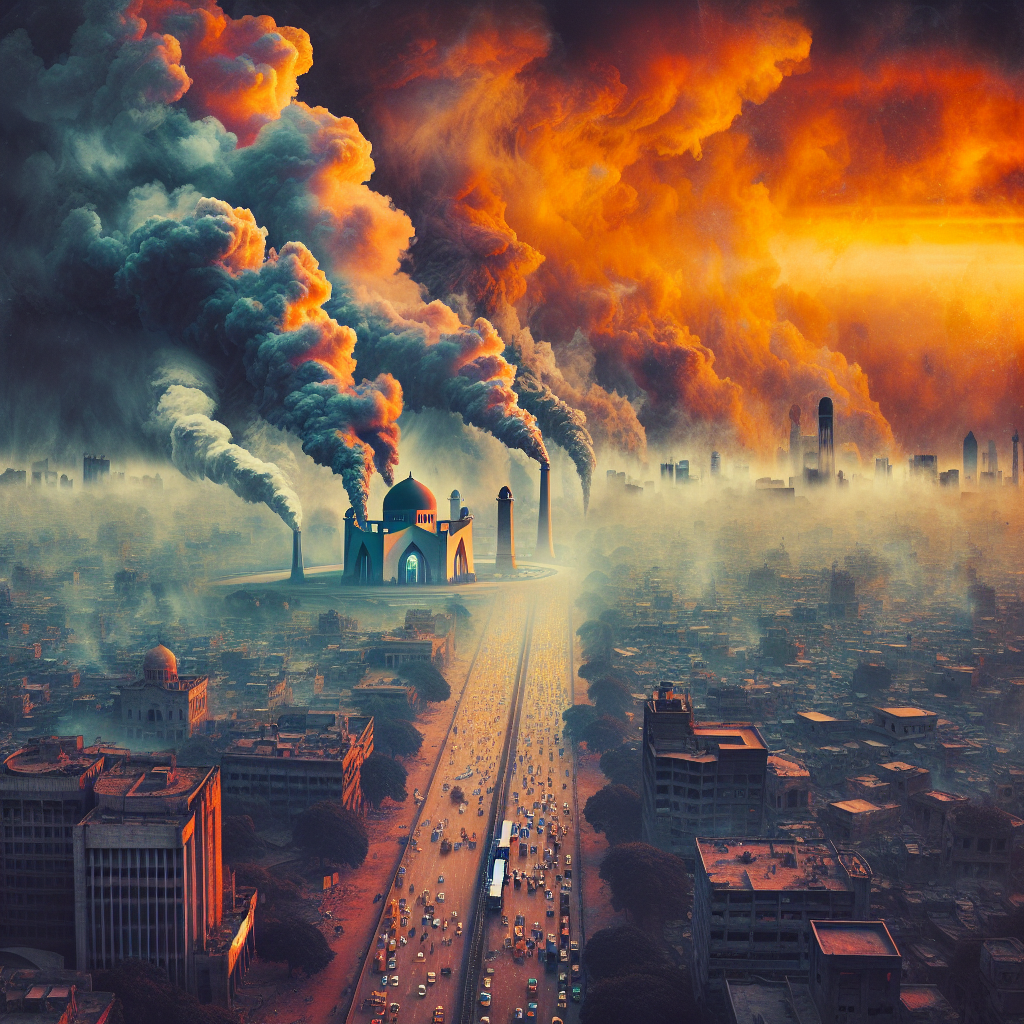The Smoggy Struggles of Lahore: A Breath of Fresh Air Needed
Imagine waking up to a city shrouded in a thick, gray haze, where the air feels heavy and every breath is a reminder of the pollution that hangs over you. This is the reality for the residents of Lahore, Pakistan, who are grappling with severe air pollution. Lahore, a bustling metropolis and cultural hub, has been facing this environmental crisis for years, particularly during the winter months when the smog is at its worst. The city's air quality has deteriorated to alarming levels, making it one of the most polluted cities in the world. The reasons behind this are multifaceted, including industrial emissions, vehicular exhaust, and crop burning in the surrounding areas. The situation is exacerbated by the geographical and climatic conditions that trap pollutants in the air.
The impact of air pollution on Lahore's residents is profound. Health issues such as respiratory problems, heart diseases, and even mental health concerns are on the rise. Vulnerable groups, including children and the elderly, are particularly at risk. Schools are often closed, and outdoor activities are limited, affecting the quality of life and education. The economic implications are also significant, with increased healthcare costs and reduced productivity. The smog not only affects human health but also damages crops and infrastructure, further straining the city's resources.
Efforts to combat air pollution in Lahore have been met with challenges. The government has implemented measures such as shutting down brick kilns, restricting vehicle emissions, and promoting cleaner energy sources. However, enforcement remains inconsistent, and the lack of public awareness and infrastructure hampers progress. The issue is further complicated by the need for economic growth and development, which often takes precedence over environmental concerns. Balancing these priorities is a delicate task that requires cooperation between government, industry, and citizens.
Critics argue that more stringent policies and better enforcement are necessary to address the root causes of air pollution. They advocate for investment in public transportation, stricter regulations on industrial emissions, and incentives for adopting cleaner technologies. On the other hand, some believe that economic constraints and the need for development make it difficult to implement such measures. They emphasize the importance of gradual change and the need for international support and collaboration.
The situation in Lahore is a stark reminder of the global challenge of air pollution. It highlights the need for comprehensive strategies that address both environmental and economic concerns. The experiences of other cities that have successfully tackled air pollution can offer valuable lessons. Public awareness and community involvement are crucial in driving change and holding authorities accountable. The youth, in particular, have a vital role to play in advocating for a cleaner, healthier future.
Lahore's struggle with air pollution is a complex issue that requires urgent attention and action. It is a call to rethink our relationship with the environment and prioritize sustainable development. The path to cleaner air is not easy, but it is essential for the well-being of current and future generations. As the city continues to grow and evolve, finding solutions to its air quality crisis will be a testament to its resilience and commitment to a better future.

